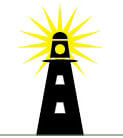Many people have strong views about the impacts of presidential elections on the stock market and nearly all of these views are wrong. Like much else about the stock market, normal logic and common sense frequently do not apply.
An analysis of elections over the last century and presidential terms over the last half century century shows surprising results. The analysis, by Dimensional Fund Advisors, showed that presidential election years — widely held to be strong market years — instead are merely average years for the stock market.
Of the 23 elections in the last century, the average market return is 9.5 percent, close to the long-term average for all years of 10 percent. Most of those years have indeed been positive with only four negative ones — 1932 (-8.2 percent); 1940 (-9.8 percent); 2000 (-9.1 percent) and 2008 (-37 percent). The financial crisis of 2008 skewed the numbers but for investors counting on a good return in election years, that’s not much comfort.
Those negative years had more to do with external events — the intensification of the Great Depression, the onset of World War II; the beginning of the tech bust and recession of 2000 and the Financial Crisis of 2008 — and little to do with elections.
Equally surprising has been the performance of the stock market during presidential terms and by party. During the last half century there have been nine presidents of which six have been Republicans and three Democrats.
Most investors — regardless of their personal preferences — believe that Republicans are better for the stock market. The numbers don’t bear that out. Over the last 50 years, Republican terms have resulted in a below average 8.93 percent annualized return while Democrats have produced a 14.9 percent annualized return.
During that time, only two presidents have had negative returns, both Republicans. Richard Nixon, during his 5 years in office, had a negative 2.9 percent return which George Bush had a negative 4.4 percent return for his eight years, which included parts of two recessions.
Of course, to be fair, the best record was also a Republican president, Gerald Ford, whose three years featured a 20.2 percent return, far and away the best record. He benefited from the bounce back from the steep 1973-74 bear market which was triggered by the Arab Oil Embargo and spike in oil prices and high inflation.
Second best was Bill Clinton at 17.6 percent. His two terms included the tech led bull market of the 1990s. Number three was Ronald Regan, who started off with a steep double recession but ended with “Morning in America” and the start of the great bull market of the 1980s and an overall return of 15.9 percent. Back Obama was close behind with 15.4 percent for his two terms.
The remaining three terms are also surprising. George H.W. Bush had a return of 13.9 percent and that wasn’t good enough to return him to office, partly because a recession marred the period before his reelection campaign. Just behind was Jimmy Carter at 11.7 percent who president of a period of economic “malaise” but a continuation of the Ford bull market.
Equally surprising is the return of Donald Trump at 10.9 percent (before the recent market decline). This return is a little above average but still 7th of the 9 presidents of the modern era.
In general we give presidents too much credit or blame for the stock market performance during their term. The real lessons are that it’s impossible to predict stock market performance, the long-term returns have been great and many things about the stock market don’t conform to our notions of logic and common sense.

